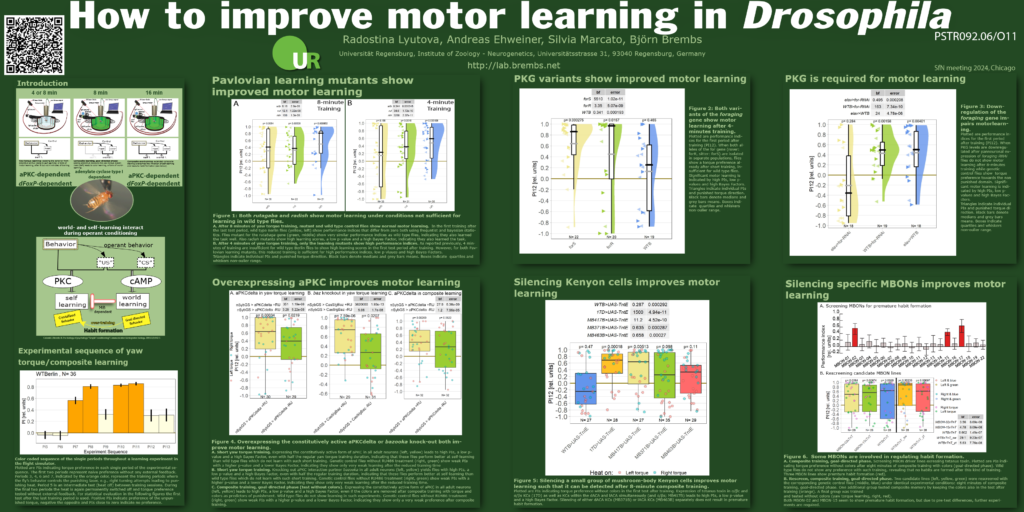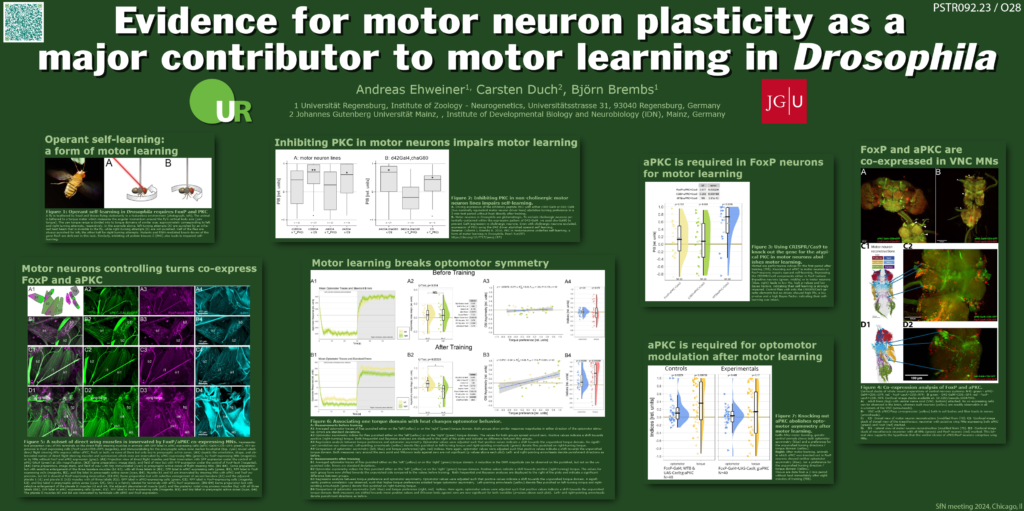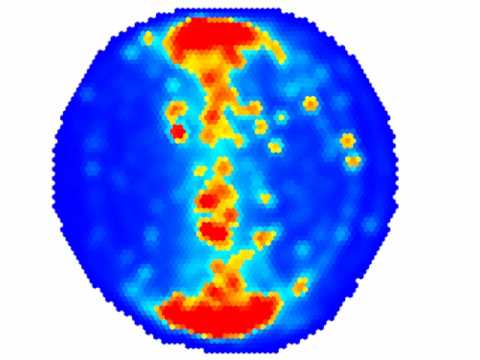It has been almost 10 years now that we have come to the realization that a particular type of our operant experiments can be classified as motor learning. In such “operant self-learning” experiments, the animal learns about the consequences of its own behavior and adjusts future behavior accordingly. In this experiment, a tethered fly, flying stationarily in an otherwise featureless environment, is trained to avoid/prefer one of two turning directions. The fly is tethered to a torque meter, measuring the angular momentum around the vertical axis of the fly, corresponding roughly to left or right turning attempts. A punishing heat beam provides feedback to the fly as to which attempted turning direction (torque) it is trained to prefer/avoid:
Fig. 1: An infrared heat beam provides feedback for the tethered fly in Drosophila yaw torque learning, a motor learning task.
A fly, tethered to a torque meter, will spontaneously attempt various flight maneuvers, even if its environment is spatially homogeneous and temporally static. The torque meter measures the angular momentum around the vertical axis of the fly, corresponding approximately to left (A) and right (B) turns, respectively. An infrared laser (red line in A), focused from behind on the fly, provides negative feedback for one of the two turning directions (in this example left turns). Half of the flies are punished for left turning attempts and half for right turning attempts.
At this year’s Society for Neuroscience meeting in Chicago, Illinois, we will present two posters revolving around this experiment. Both posters will be presented in the same session, on Sunday morning, October 6, 8am-noon, poster boards O11 and O28.
One of the posters, presented by Dr. Radostina Lyutova, will present progress on our long-running project in which we have discovered many different ways in which we can improve the flies’ learning ability: we have mutant flies, transgenic flies with up- or downregulated genes or silenced neurons – they all have in common that the self-learning process is enhanced, i.e., the learning requires less training than in the unmanipulated control flies. Click on the image below to download the poster:

I will present the second poster, which contains evidence that the neurons that are modified by the operant training are motor neurons in the ventral nerve cord of the animals. To be specific, it looks as if the plasticity is happening in the motor neurons innervating the steering muscles that set the wing position during turning maneuvers:

If you want to learn more about our research, come visit us at the posters on Sunday morning in Chicago!















